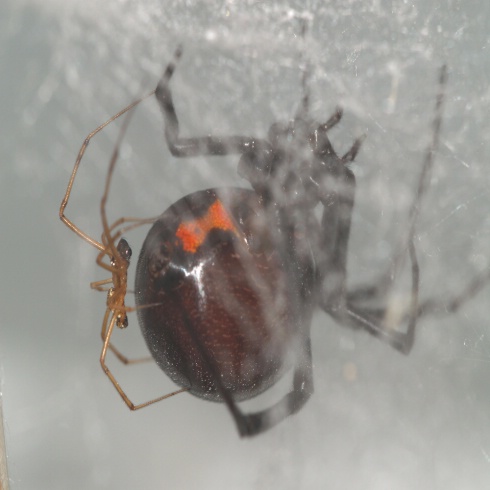Animal Sex: How Black Widow Spiders Do It

Black widow spiders are so named because of the widespread belief that the female spider always eats her partner after sex, but the mating habits of these arachnids aren't actually so black and white.
The common name "black widow spider" most often refers to any of the three North American spider species with the distinctive dark body and red hourglass pattern. The name is also occasionally used to describe other — or even all — members of the Latrodectus (widow spider) genus, including the notoriously cannibalistic Australian redback. Despite the blanket name, the penchant for sexual cannibalism of the genus varies between species, said Chad Johnson, a widow spider expert at Arizona State University.
In each widow species, the male is no more than half the size of the female. After maturing, the male will spin a small "sperm web." He deposits some semen into the web and coats his palps —two appendages near the mouth, which resemble tiny claws or thick antennae — with sperm. He then sets off to find a female of his species. [Gallery: Spooky Spiders]
This search is conducted over long distances using chemical cues, Johnson said. When he finds a mature female, the male will perform a vibratory song and dance on her web by plucking the strands as he walks around. He cautiously makes his way to the female, and then starts tapping her body. Eventually, the male will insert his palps into the female's reproductive opening on her abdomen.
With his sperm deposited, the male hightails out of there, lest he becomes a post-sex snack. However, cannibalism only occurs in some widows. The female Latrodectus katipo, for example, doesn't eat her mate. Occasionally, North American widow spiders do engage in cannibalism —males actually prefer to mate with recently fed females to reduce their chances of getting eaten. Male Australian redbacks, on the other hand, voluntarily sacrifice themselves to their hungry mates.
If the male widow survives the encounter, he will continue to mate with other females until he dies of old age, less than a year later. Females, which live for several years, store and use the sperm of their various mates at will.Follow us @livescience, Facebook & Google+. Original article on LiveScience.com.
Get the world’s most fascinating discoveries delivered straight to your inbox.



